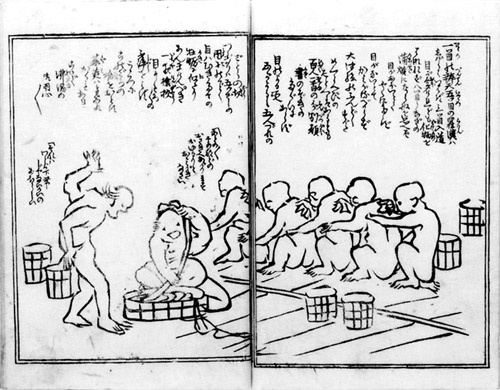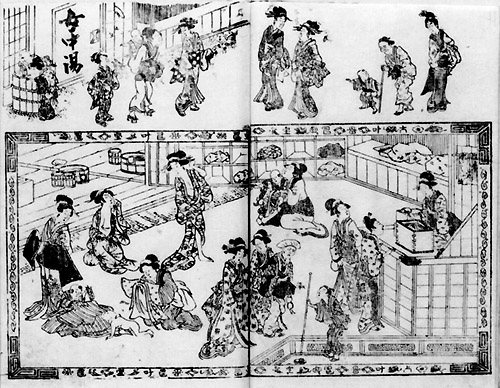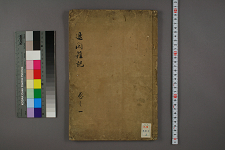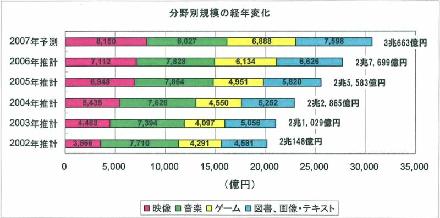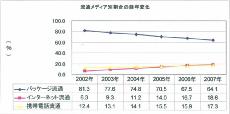August 21, 2007
As Japan and India Forge Economic Ties, a Counterweight to China Is Seen
NEW DELHI, Aug. 20 — When Prime Minister Shinzo Abe of Japan touches down in India this week, it will be the highest-level step yet in what analysts say is a long-term effort to balance, if not contain, China’s growing economic and political might.
As Beijing’s influence in Asia and around the world has grown, their common interests have forced Tokyo and New Delhi to begin warming their historically chilly relationship and to start forging closer economic ties. “The key issue facing the whole region is how to accommodate the rise of China,” said Suman Bery, the director general of the National Council of Applied Economic Research, a New Delhi research group. Indian economists estimate that Japanese investment in India will reach $5.5 billion by 2011, compared with just $515 million in the 2006 fiscal year.
Mr. Abe is on his first trip to India. He and his Indian counterpart, Manmohan Singh, are expected to unveil public-private partnerships and new business initiatives. Leading the agenda will be a $100 billion infrastructure project to create a high-tech manufacturing and freight corridor between New Delhi, India’s capital, and Mumbai, its port and financial center. It would be the most expensive development project in India, and a third of the bill would be paid by Japanese public and private money. Mr. Abe and Mr. Singh are expected to announce that the two governments have reached formal agreement on the deal.
Japanese business leaders traveling with Mr. Abe will disclose similar deals this week — on natural gas, transportation, currency swaps and Japanese investment in Indian educational projects, Indian officials said. Chief executives from Toyota, Mitsubishi, Canon, Hitachi and others have joined a new India-Japan business leader forum, which will meet for the first time on Wednesday in New Delhi.
Consultants are trying, so far in vain, to coin the catchphrase, like “the Samurai and the Swami,” that will sum up the nascent strategic economic relationship between the countries.
 swami
swami
━━
n. スワーミ ((ヒンズー教の導師の尊称)).
n., pl. swa·mis.
- Hinduism. A religious teacher.
- A mystic; a yogi.
- Used as a form of address for such a person.
[Hindi svāmī, master, swami, from Sanskrit, being one's own master, possessing proprietary rights.]
Courting India has come slowly for the Japanese, who were highly critical of India’s surprise nuclear weapons test in 1998. While Japan is a large lender to India, until now it has not been a major investor or business partner. Instead, Japan has virtually sat on the sidelines while countries from Switzerland to Brazil cemented business alliances in India, where economic growth is about 9 percent a year.
Japan’s trade with India was about $6.5 billion in 2006, according to the Indian government — about 4 percent of Japan’s trade with China. “Whatever doubts Japan had for so long, now India is smelling like roses,” said Jagdish N. Bhagwati, an economist and a professor at Columbia University and a fellow at the Council on Foreign Relations. “They want to get in before it is too late.”
For Japan, India is an attractive market, both for its growing consumer spending and cheap labor. Tokyo also has an interest in diversifying its Asian trading partners and reducing its dependence on China. As an increasingly confident China has flexed its muscle regionally and globally, anti-Chinese sentiment has been rising in Japan, as has anti-Japanese sentiment in China.
“India is a much safer bet, in business terms,” because it lacks the historical baggage, said Richard Tanter, professor of international relations at the Royal Melbourne Institute of Technology in Australia.
Then there is the straightforward economics. Japanese and other automakers, for instance, view India as a potential manufacturing center that could offer lower labor costs than China. But India’s manufacturing and export potential are still crippled by an inability to move goods in and around the country.
The proposed New Delhi-Mumbai industrial corridor could address that problem. The nearly 1,500-kilometer corridor would include a high-speed freight line and nine 200-square-kilometer investment regions dedicated to industries like chemicals and engineering, as well as three ports and six airports.
Infrastructure projects like the industrial corridor are “the kind of thing Japanese companies are particularly good at — roads and harbors and ways to get into developing countries,” Mr. Bhagwati said. Japanese companies were heavily involved in the construction of New Delhi’s clean, efficient subway system.
India, which desperately needs more power generation, could be a particularly fertile market for Toshiba, which bought the nuclear power plant manufacturer Westinghouse last year.
Any deals between India and Toshiba would be far in the future, though. India’s government is still deeply divided over a deal with the United States that allows India access to civilian nuclear technology, and Japan may not support the United States-India nuclear deal, given Tokyo’s aversion to nuclear proliferation.
Still, on Monday, Mr. Singh stressed India’s commitment to nuclear energy during the opening of a new research center in New Delhi, calling oil imports an “unbearable burden.”
The most successful India-Japan business partnership to date is a venture by the automakers Suzuki and Maruti, which has become one of India’s leading carmakers after a troubled start in the early 1980s. Sales of its reliable, zippy and cheap Marutis were up 17 percent in the quarter that ended in July from a year ago, to 1.6 million units.
Toyota’s India partnership, Toyota Kirloskar Motors, which dates back to 1999, makes about 60,000 units a year. But, last month Toyota executives said they expected the unit to produce 10 times its current capacity by 2015.
Culturally and economically, Japan and India remain far apart, a fact that government officials and economists said could complicate building a stronger relationship. Speaking Monday during a meeting in a New Delhi hotel to discuss the Japanese prime minister’s visit, Mr. Bery, the director of the New Delhi research group, said Japan’s manufacturing is “state of the art,” which has “not been our strong suit.”
Minutes later, the five-star hotel fell victim to one of New Delhi’s frequent power disruptions, the lights flickered out and the meeting carried on in the dark.
